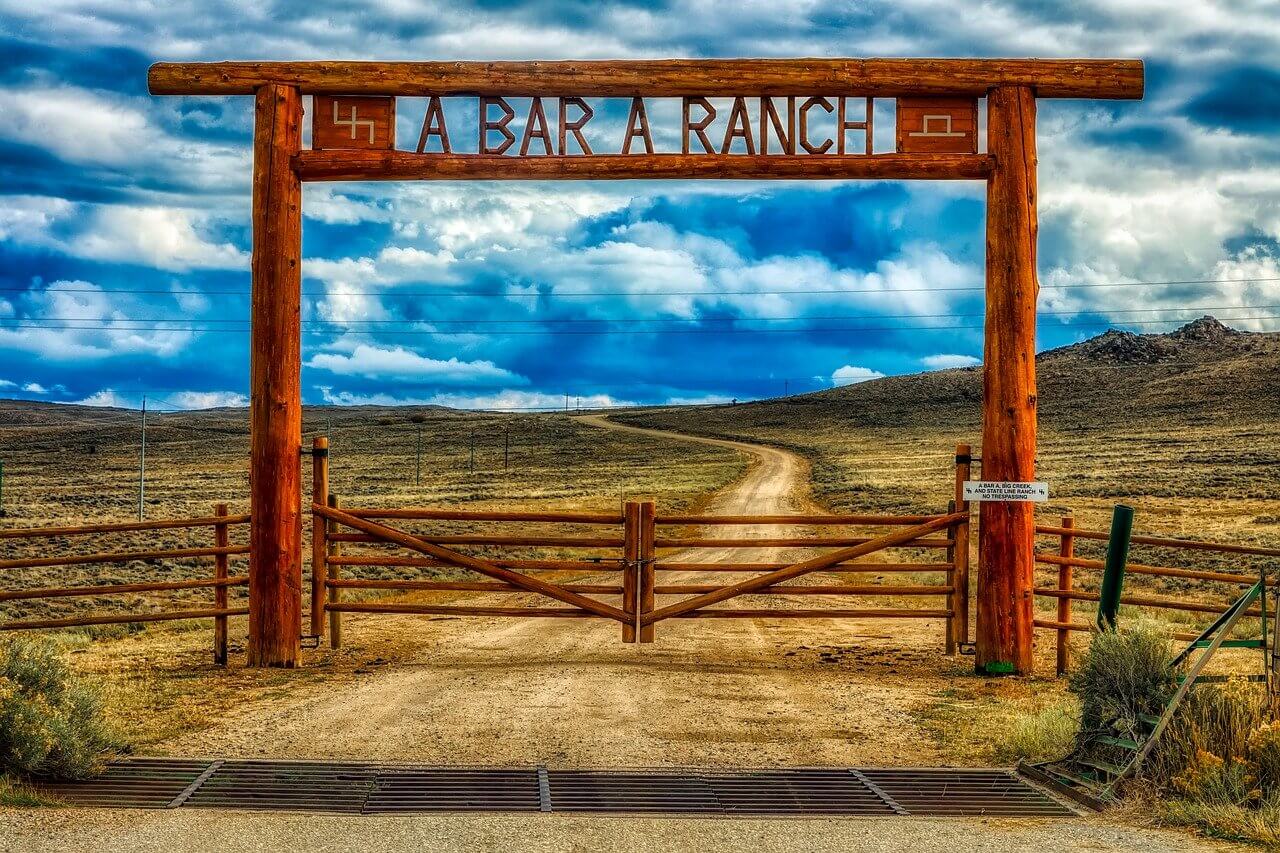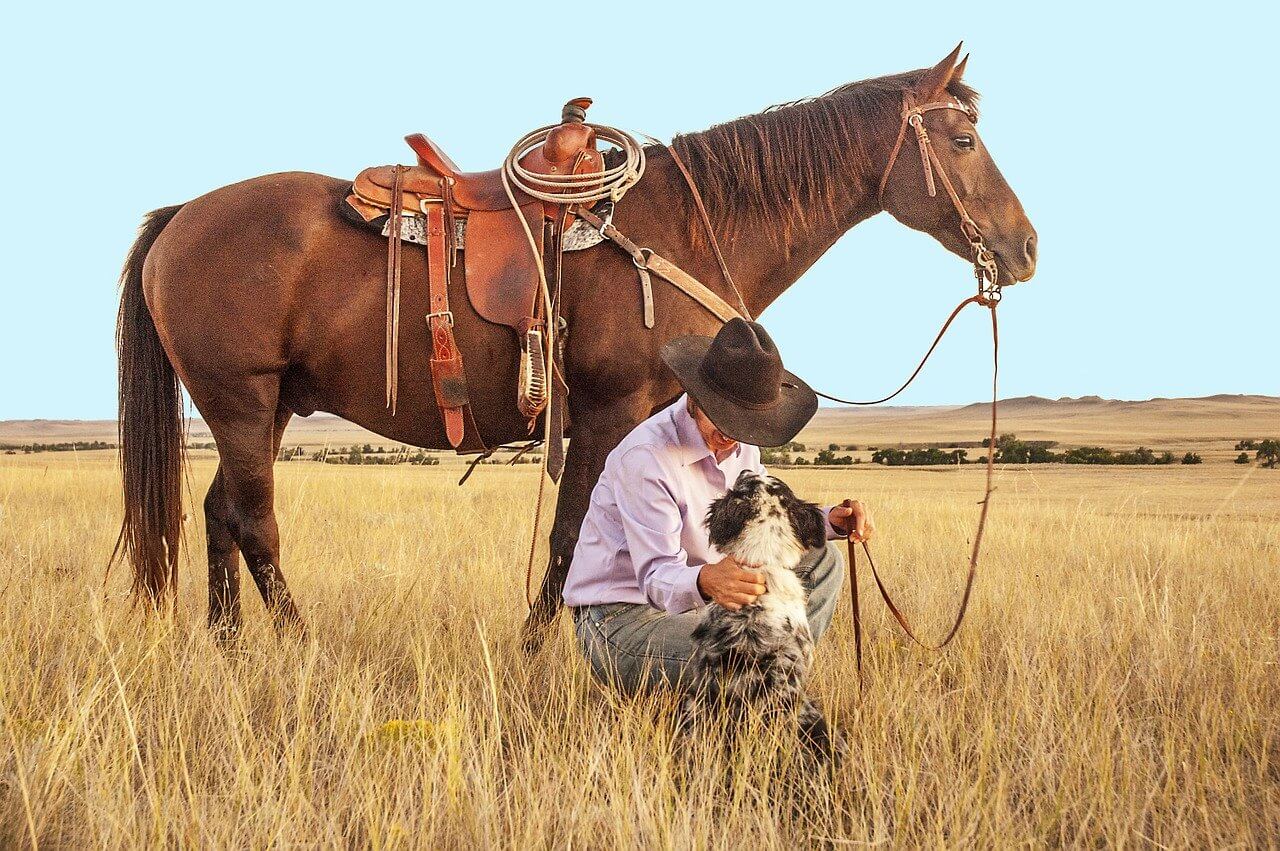Can ranching be sustainable? It’s a major part of our country’s economy and has the potential to provide a lot of jobs to people in rural areas. However, in order to ensure the health of the environment (and keep your ranch operating on a fiscal and logistical level) it’s important to consider the best way to go about this type of agriculture.
What You'll Learn Today
What is Ranching? Pros and Cons

Ranching is a term that refers to raising herds of animals on large tracts of land. Generally, these animals are grazing animals – usually cattle.
It is often considered one of the most efficient ways to raise livestock and to provide meat, dairy products, and other raw materials (like leather) at a commercial and local scale. It’s a vital part of rural development and economies.
Unfortunately, it also poses many disadvantages, something that has led lots of people to wonder whether it is sustainable. Not only does it reduce habitat for native species due to deforestation, but it can also be difficult for some species of grass to thrive on nutrient-poor soil.
Many ranching practices have contributed to overgrazing and desertification. It has even been linked to the rise of global warming, as cattle release large amounts of methane and are responsible for more greenhouse gas emissions than all methods of transportation.
Is Livestock Ranching Sustainable?
Whether you’re a rancher or someone who is thinking about getting into ranching – or even an outsider looking in – you might wonder whether ranching is sustainable.
Before we can answer that question, it’s necessary to first define what is meant by the word, “sustainable.”
“Sustainability” can refer to agriculture, the environment, or even the ability of a farmer to “sustain” his work on a ranch.
Most definitions of sustainability are threefold. In order for livestock ranching to be considered sustainable, it must be environmentally, economically, and socially sound.
- To be environmentally sustainable, ranching should preserve the land while also caring for animals.
- Economic sustainability might mean being able to provide a rancher with the money he needs not only to keep the ranch running but also to provide a viable livelihood.
- Social sustainability refers to being able to keep generations of ranchers on the land and in the local community so that both can thrive.
Is Ranching Good for the Environment?

While sustainability in ranching (and all other forms of agriculture) requires components beyond just the environmental ones, the first step in making a ranch wholly sustainable is to ensure that it is good for the environment.
After all, if the land ceases to thrive, it can’t support cattle and it can’t support the rancher or the local community, either.
Unfortunately, ranches are known for a marked lack of sustainability.
Livestock ranching has rapidly grown to be part of the meat processing industry rather than a small farm business. Instead of individual families managing small ranches, cattle are raised on massive tracts of land and graze the grass all the way down to the dirt.
This is detrimental in that it can lead to erosion and deforestation. This causes degradation of soil quality, a loss of habitat for wildlife, and even the extinction of various plant and animal species.
Not only that, but the cattle’s unique digestive system releases large amounts of methane gas that can pollute the air and is a major contributor to global warming. Run-off from ranches can further pollute the air and water when fertilizers, antibiotics, hormones, and pesticides are used.
This is all when ranching is done in the “traditional”, largescale sense that most commercial farms rely on.
When done on a smaller, more thoughtful scale, though, ranching can have a neutral impact on the environment – or even be good for it.
When pastures are properly managed (such as through rotational grazing), manure can fertilize the soil and lead to lusher growth. Much of the carbon produced by the cattle can be sequestered back into the soil, reducing greenhouse emissions.
Let’s not forget that land that is used for rangeland is not sold for development, either. Rather than subdividing a parcel of land into plots to be used to build houses, it can be used to feed thousands of mouths (including your own!).
Improving the Sustainability of Ranches
Ranchers are increasingly turning to a more natural way of raising cattle.
Not only can this be less expensive – grass-fed animals often don’t need to be fed supplemental grain, which can cut costs – but it’s also far better for the environment. It is economically and environmentally sustainable all at the same time.
For sustainability to be a reality, it’s important for ranchers to consider how they can best manage their grazing to keep natural resources alive. As a rancher, consider the following environmental practice as you move toward sustainability on your farm:
- Conducting regular soil tests
- Installing and maintaining water management systems
- Planting trees
- Practicing rotational grazing
- Incorporating conservation tillage
Conducting regular soil tests is one example of something you can do to move toward sustainability. A soil test will determine whether certain nutrients are present (or lacking) in the soil, letting you know whether it’s necessary to fertilize or not.
This can reduce the unnecessary use of chemicals that can deplete and exhaust the soil, making it difficult for new generations of plants to survive.
Rotational Grazing for Pasture Health
Of all of the sustainable principles you might consider implementing, rotational grazing is perhaps one of the most important. Rotational grazing provides cattle with a rich variety of forage and keeps the soil and grass healthy.
Rotational grazing involves moving the herd frequently, sometimes several times per day, from different sections of the pasture to others.
How often a herd needs to be moved will vary depending on how many animals are grazing, the weather conditions, and what kind of grass is available in different sections of the pasture.
This method of pasture management lets each grazed area recover more quickly after the cattle have grazed. It can reduce soil erosion and runoff by allowing grass with larger mass in the root systems to remain – rather than letting cattle graze down to the bare dirt.
Rotational grazing also spreads manure throughout the pasture more evenly. This means fewer problems with parasites and disease and fewer medications that need to be used as a result.
This can help save money and help a rancher improve his bottom line and eliminate the likelihood that those harmful chemicals will wind up in the waterways.
If you’re interested in learning more about rotational grazing on a ranch, check out this video for techniques that will work for anyone:
How Can Cattle Farming Be Made More Sustainable?
While cattle farming and ranching have reputations for being not so environmentally friendly, the good news is that the tides are changing.
Most ranches and environmental proponents share the same goal – they want to ensure that the grasslands remain healthy for many years of use and mutual benefit.
When the sustainable principles mentioned above are taken into consideration, the environment can be restored and supported so that it can continue to feed cattle without requiring supplemental grain and other resources.
Not only that, but when done correctly, ranching can actually improve the health of the environment (rather than just staying at the status quo).
With some dedication and thought paid to the production process, it is possible to raise beef cattle and protect the environment at the same time.